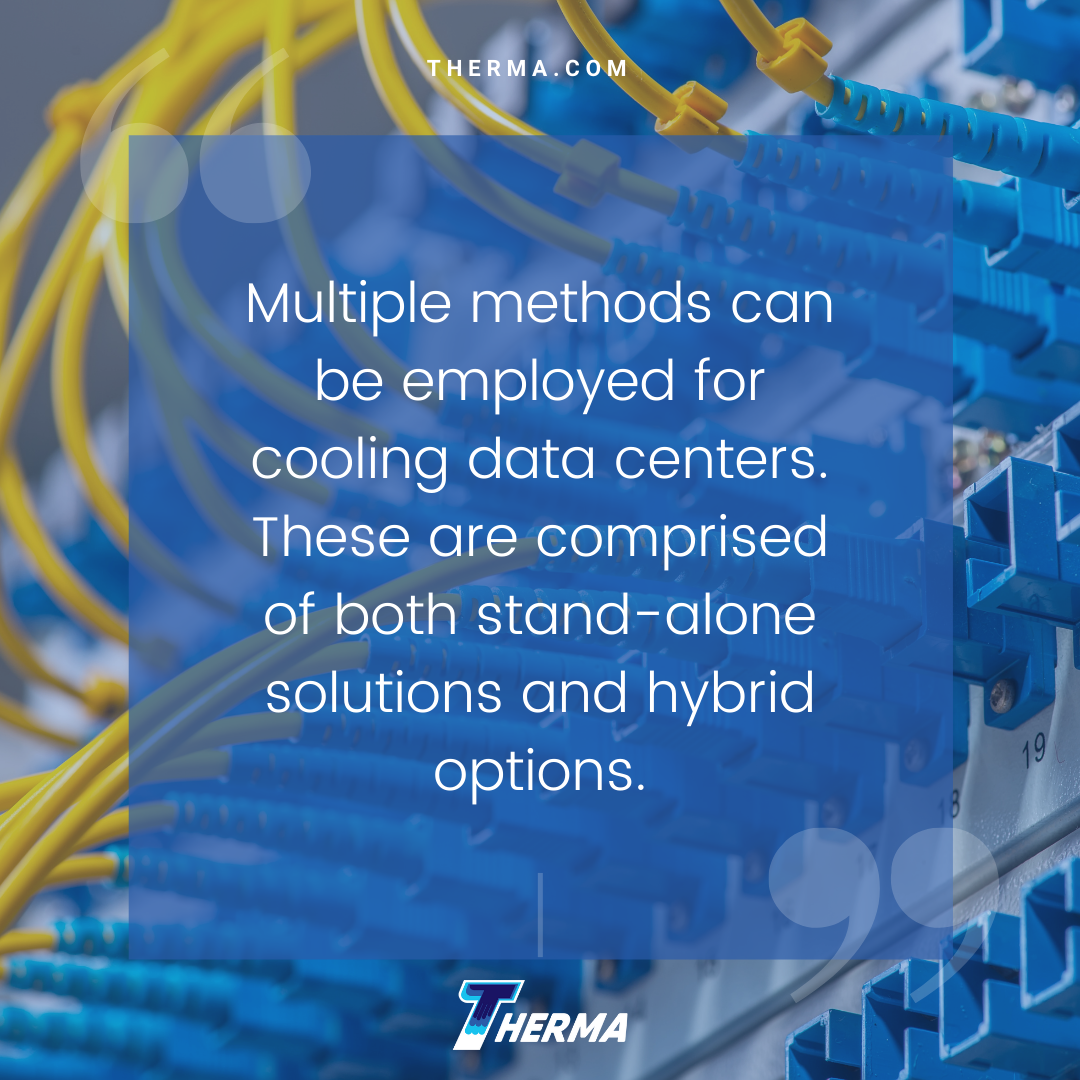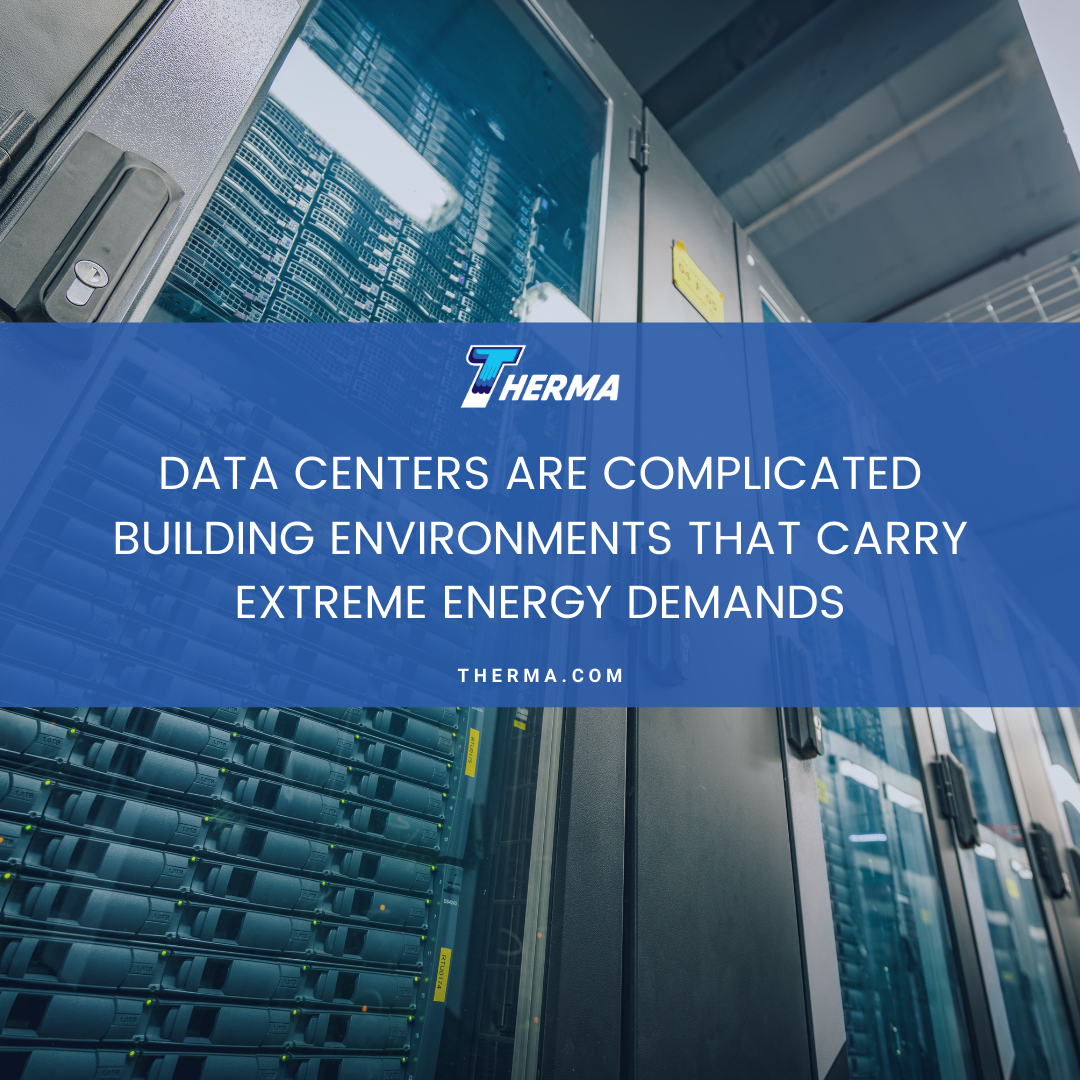Data centers are complicated building environments that carry extreme energy demands. A significant challenge when designing and building data centers is achieving sufficient cooling while minimizing energy costs.
Data centers are often considered mission-critical facilities with priority status in the event of power shortages. This can be a double-edged sword–while your data center remains operational, its ability to run efficiently on a minimized power supply becomes even more critical.
Cooling decisions should be finalized during the design stage. Additional data center design factors requiring careful consideration will include the data center location, prevailing climate, data center density and targeted colocation costs.
Server Room Design
A raised floor can provide room for increased airflow or water-cooled pipes below the data center components, while cables are run overhead. This can be combined with Calibrated Vectored Cooling (CVC) that optimizes airflow pathways and reduces the number of fans needed. It can also be used in tandem with a chilled water system, with air handlers directing cold airflow up between loaded racks.
Alternating cold and hot aisles increase efficiency. Hot air is expelled through exhausts at the rear of one aisle into the Computer Room Air Conditioners (CRAC) intake. Cold air is pushed in from the front of the adjacent aisle. Blanking panels fill gaps on empty racks to divert cold air back into the pathway and prevent overheating or waste of chilled air. Cabinet layout is crucial to energy efficiency.
Data Center Cooling Solutions
Multiple methods can be employed for cooling data centers. These are comprised of both stand-alone solutions and hybrid options.
Immersion Cooling Solutions
- Single-Phase Pumped Immersion Cooling
Servers may be installed in a hydrocarbon-based fluid to provide direct contact with the coolant. As the coolant heats, it is replaced by chilled liquid pumped in from an adjacent cooling distribution unit (CDU) containing a heat exchanger.
- Two-Phase Condensed Immersion Cooling
Unlike single-phase coolers through which coolant must be pumped, two-phase immersion requires condensation coils. Entire servers can be immersed in a sealed vat of fluorocarbon-based fluid. The liquid will come up to a boil from the server’s heat, typically at half the temperature required to boil water. It turns into a gas, condenses on coils at the top of the sealed container, and drips back down to repeat the cycle.
Alternative Cooling Systems
- Direct-to-Chip Cooling
Pipes can also be used to deliver coolant directly to the motherboard’s processors. The coolant runs by an installed plate and extracts heat to be carried to the chiller plant. This is one of the most effective cooling methods, but maintenance must be diligent as a leak inside the server could cause a massive system failure.
- Geothermal Cooling Systems
Geothermal systems use the surrounding earth as a heat sink. Underground piping systems act as a heat exchanger, reducing energy costs. Fans redistribute the cooled air from around the pipes into the server room, typically built directly above the geothermal piping system. The controlled temperatures underground and the closed-loop system keep cooling costs for data centers low.

Additional Design Considerations
IT loads (and subsequent heat generation) can be reduced through consolidation and virtualization. Multiple Power Distribution Units (PDUs) can be implemented and optimized to balance loads and redirect energy demands for higher efficiency.
Edge data centers can be strategically built to extend the network without increasing load on a system close to capacity. These have a smaller footprint and can often take advantage of environmentally supported cooling, including geothermal options.
By considering data center cooling needs from the conception of a new center’s design, energy costs can be significantly reduced, especially when working with a data center energy practitioner specialist.
The data centers of tomorrow have the potential to become almost self-maintaining, depending on closed-loop systems and natural cooling choices that can not only contribute to lower operational and maintenance costs, but also provide a nearly perpetual system.
Whether you’re interested in building one of the data centers of tomorrow, or looking for ways to make your current data center design more efficient, the design specialists at Therma are available to help you 24 hours a day, seven days a week.








